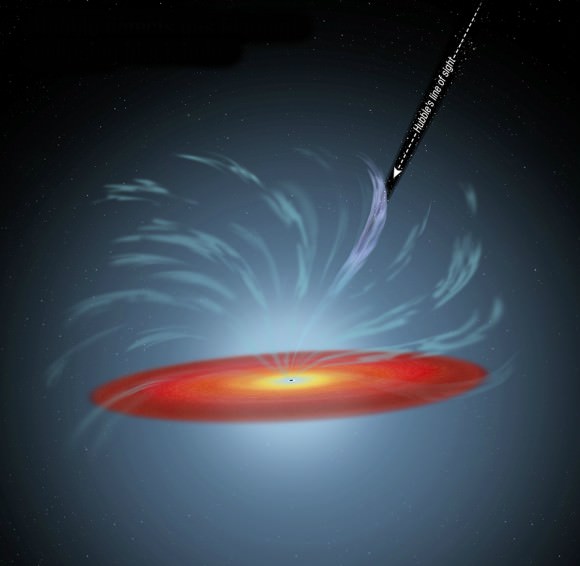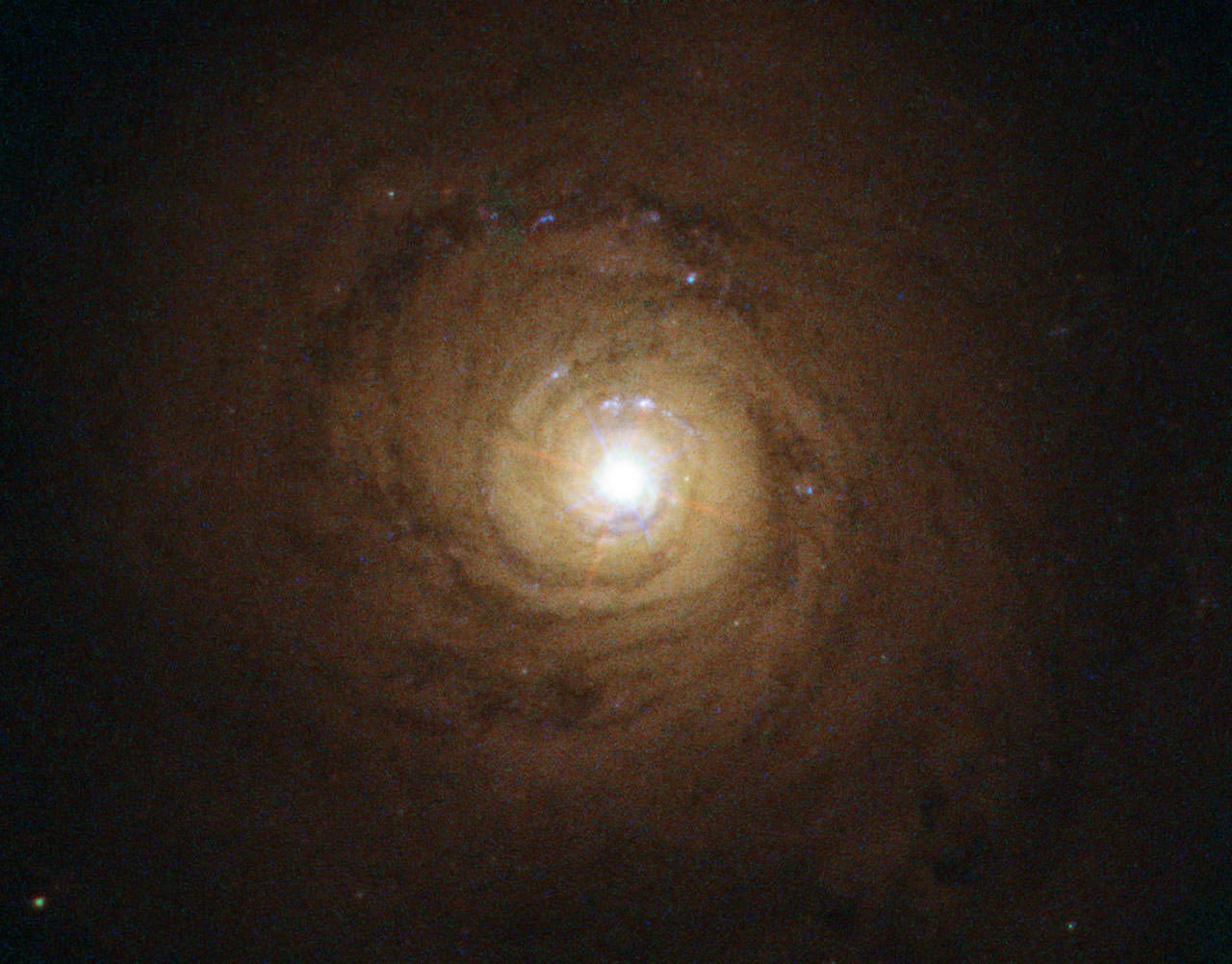Sometimes it takes a second look — or even more — at an astronomical object to understand what’s going on. This is what happened after astronomers obtained this image of NGC 5548 using the Hubble Space Telescope in 2013. While crunching the data, they saw some gas moving around the galaxy in a way that they did not understand.
From the supermassive black hole embedded in the galaxy’s heart, the researchers detected gas moving outward quite quickly — blocking about 90% of the X-rays being emitted from the black hole, a common feature of objects of this type. So, astronomers marshalled a bunch of telescopes to figure out the answer.
Here’s what they knew before: black holes force matter into a spiral that surround the object, creating a flat plane of material known as an accretion disc. Heating in this disc sends out the aforementioned X-rays as well as some ultraviolet radiation. But NGC 5548 is doing something different.
The gas stream, researchers stated, “absorbs most of the X-ray radiation before it reaches the original cloud, shielding it from X-rays and leaving only the ultraviolet radiation. The same stream shields gas closer to the accretion disc. This makes the strong winds possible, and it appears that the shielding has been going on for at least three years.”

Quite the suite of telescopes did follow-up observations: NASA’s Swift spacecraft, Nuclear Spectroscopic Telescope Array (NuSTAR) and Chandra X-ray Observatory, and ESA’s X-ray Multi-Mirror Mission (XMM-Newton) and Integral gamma-ray observatory (INTEGRAL).
“This is a milestone in understanding how supermassive black holes interact with their host galaxies,” stated lead researcher Jelle Kaastra of the SRON Netherlands Institute for Space Research.
“We were very lucky. You don’t normally see this kind of event with objects like this. It tells us more about the powerful ionised winds that allow supermassive black holes in the nuclei of active galaxies to expel large amounts of matter. In larger quasars than NGC 5548, these winds can regulate the growth of both the black hole and its host galaxy.”
The research is available in Science Express and also in preprint version on Arxiv.
Sources: NASA and Spacetelescope.org


I recall a moment when there were no known black holes.
The I recall a moment that black holes had these simple accretion disks.
Then I recall a moment that a black hole could be detected because it acted like a lens.
Then recall a moment that black holes created these jets towards the poles.
And now we have the moment where they discover gas around the black hole that shields the x-rays.
It is amazing, from just a undetectable black object in the universe to a complete visually complicated structures.
Just an aside, intended as a constructive one:
I’ve noticed that Elizabeth Howell seems fond of phrases of the form “quite the X”. In this post we have “quite the suite”; in earlier posts we have had “quite the surprise”.
I would guess that these phrases are part of the regional dialect she grew up with. I have nothing against regional dialects, but surely it’s better to stick to standard English in Universe Today articles. Most people would use the words “a” and “an” rather than “the”, e.g. “quite a suite”; “quite a surprise”.
Relevant:
Black holes have been theorized (30 years ago) to radiate energy. See Hawking Radiation.
http://en.wikipedia.org/wiki/Hawking_radiation
But this article does not talk about hawking radiation but about gas streams near the black hole at unexpected placed that blocks the x-ray rays from the black hole.